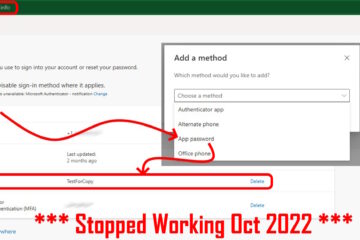In the field of AI, data annotation accuracy is key to model effectiveness. This guide explores strategies for building and managing a data annotation team members. It underscores the need to choose the right team members, train them well, and ensure clear communication.
These measures are vital for improving the annotation process. They lead to the creation of quality data crucial for AI progress. Forming a team capable of handling the demanding requirements of data annotation is pivotal in advancing AI technologies. Dive in to explore the tips on how to choose a manage a perfect team for your AI project!
The Foundation of Data Annotation Team
Approximately 80% of the effort involved in preparing a machine learning algorithm is allocated to gathering, purifying, and labeling data. Hence, a strong data annotation strategy can make the process more efficient. This ensures that the initial stages of AI project development run smoothly and effectively. A solid strategy revolves around several key elements:
- Goal setting. Define clear, achievable objectives for what the annotated data should accomplish. This step guides the annotation process, where every action aligns with the end goal.
- Tool selection. Choose the right tools and technologies that fit the project’s needs. Effective tools can significantly reduce the time and effort required for annotation tasks.
- Team structure. Organize a team with defined roles and responsibilities. This organization is crucial for maintaining a streamlined workflow and ensuring quality control.
- Guidelines creation. Develop comprehensive annotation guidelines. These serve as a roadmap for annotators. It ensures consistency and accuracy in the data labeling process.
- Quality checks. Implement a system for regular quality reviews. This practice helps identify and correct errors early. And to maintain the integrity of the annotated data.
Moreover, adopting a flexible approach allows the team to adapt to any unforeseen challenges. This adaptability is vital for handling the complexities of data annotation projects. Investing in a solid data annotation strategy, prepares teams for a smoother annotation process. This effort greatly aids the success of machine learning projects. This way, the algorithm is trained on data that is both high-quality and accurately labeled.
Building a Data Annotation Team
In the core of a data annotation team, various roles and responsibilities ensure the project’s success and quality. Let’s break down these roles:
- Project manager. This role involves steering the project towards its goals. The project manager oversees progress and ensures that the team meets quality standards. They also handle planning, tracking deadlines, and communicating with stakeholders. Their leadership keeps the team focused and on track.
- Data annotators. These team members are at the heart of the data annotation process. They label data according to specific guidelines and criteria. Precision and attention to detail are key in their work. They must understand the project’s objectives to apply labels accurately, which is vital for training effective machine learning models.
- Quality assurance team. The QA team plays a critical role in maintaining data integrity. They review the annotated data to confirm its accuracy and consistency. This step is essential for catching and correcting errors. This way, the dataset’s quality will meet the project’s high standards.
- Technical lead. Responsible for the technical backbone of the project, the technical lead selects and implements the tools for the annotation process. They ensure these tools enhance efficiency and meet the project’s needs. Additionally, the technical lead integrates the annotated data into the AI model’s training process. Along with checking compatibility and optimizing performance.
- Continuous training and development. The data annotation field is ever-evolving, with new needs and technologies emerging regularly. Continuous training for team members is crucial. It ensures everyone stays updated on the latest annotation methods and tools. This ongoing development supports the team’s ability to maintain high-quality work.
Together, these roles form a cohesive unit that drives the annotation project forward. This approach meets today’s project needs, and prepares for future technology advancements. It encourages creative solutions and critical thinking, crucial for data annotation challenges. The setup also allows for scalability, adapting as project demands change. The right team is the key to deliver the data necessary for advanced AI development.
How to Manage an Effective Annotation Team?
Starting with a solid foundation of roles and responsibilities is essential. When outsourcing this team, managing it effectively is the next critical step. This involves smart recruitment, solid training, clear communication, and the ability to scale. Here’s a concise strategy:
Recruitment and selection:
- Choose candidates with a sharp eye for detail and a strong sense of responsibility. These qualities are vital for data annotation accuracy.
- Look for team players with problem-solving skills. They’re essential for overcoming project challenges.
- Assess candidates with practical tests to see if they fit your project’s needs.
Training approach:
- Begin with detailed training on your project’s annotation guidelines. Everyone needs to understand these from the start.
- Use real scenarios in training. This prepares the team for actual tasks and emphasizes the need for precision.
- Keep the team updated with regular training on new tools or changes in guidelines.
Communication and feedback:
- Maintain open lines for easy idea and feedback sharing. This keeps everyone informed and engaged.
- Hold regular meetings to track progress and tackle any issues. It’s a chance to brainstorm and improve together.
- Promote a feedback culture. It’s key for continuous improvement and adapting to new challenges.
Scaling the team:
- Plan for your team’s growth as the project evolves. Flexibility is crucial for managing workloads efficiently.
- Prepare to integrate new members smoothly, ensuring they quickly become productive team players.
- Adjust processes and tools to fit a growing team, keeping quality consistent.
These steps ensure your annotation team not only meets current project demands but is also prepared for future growth. With a focused approach, you will get a team ready to produce high-quality data for AI development.
Summing Up
In conclusion, building a data annotation team that meets the high standards of AI development requires planning. From recruiting individuals with the right skills to clear communication. Each step is important in enhancing the data annotation process.
The focus on adaptability and efficiency ensures the team’s ability to handle evolving project demands. This guide provides a roadmap for assembling a team capable of producing high-quality data. By following these strategies, you can establish a solid foundation for any AI project. Start paving the way for future advancements in the field today.





0 Comments